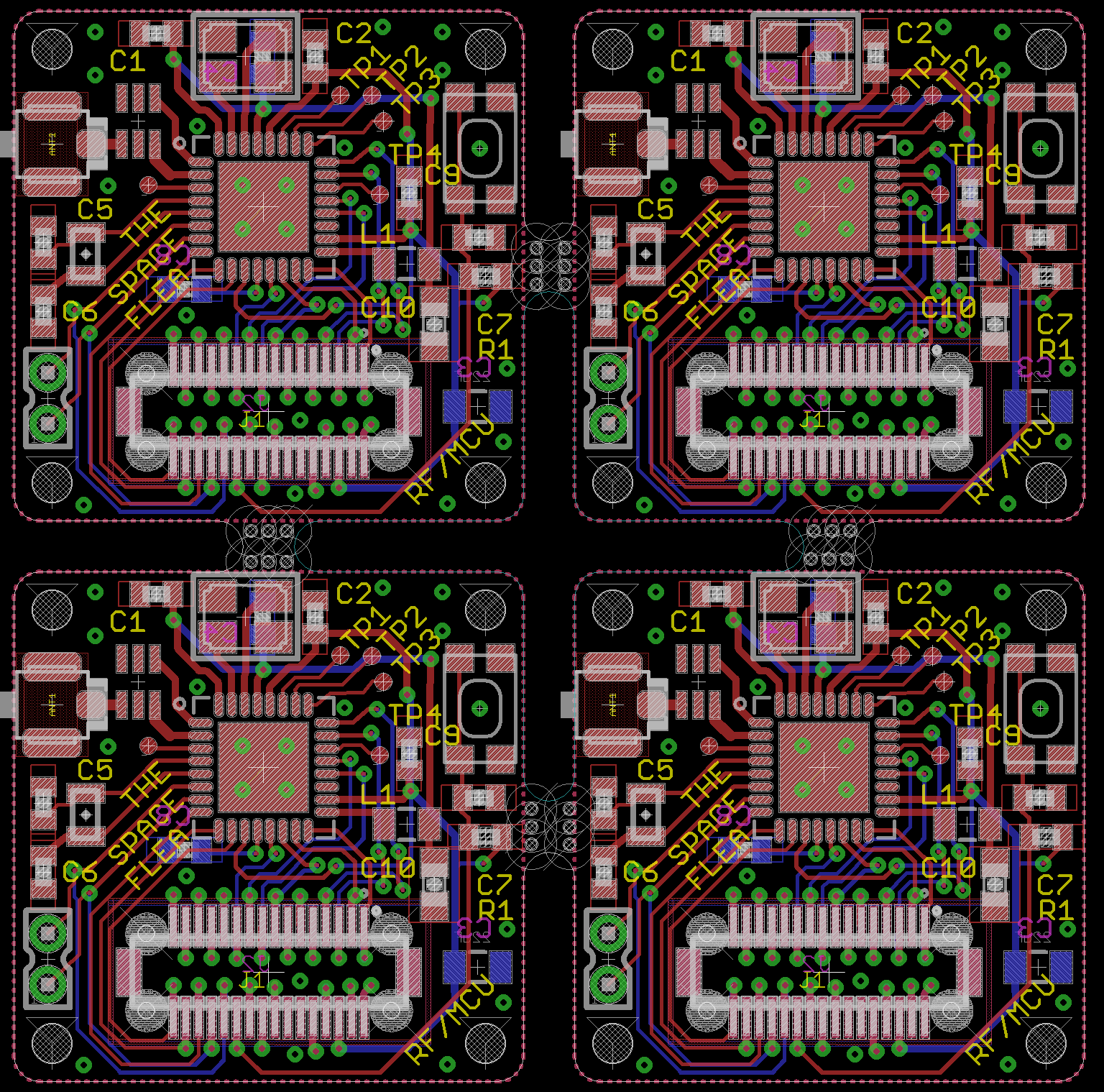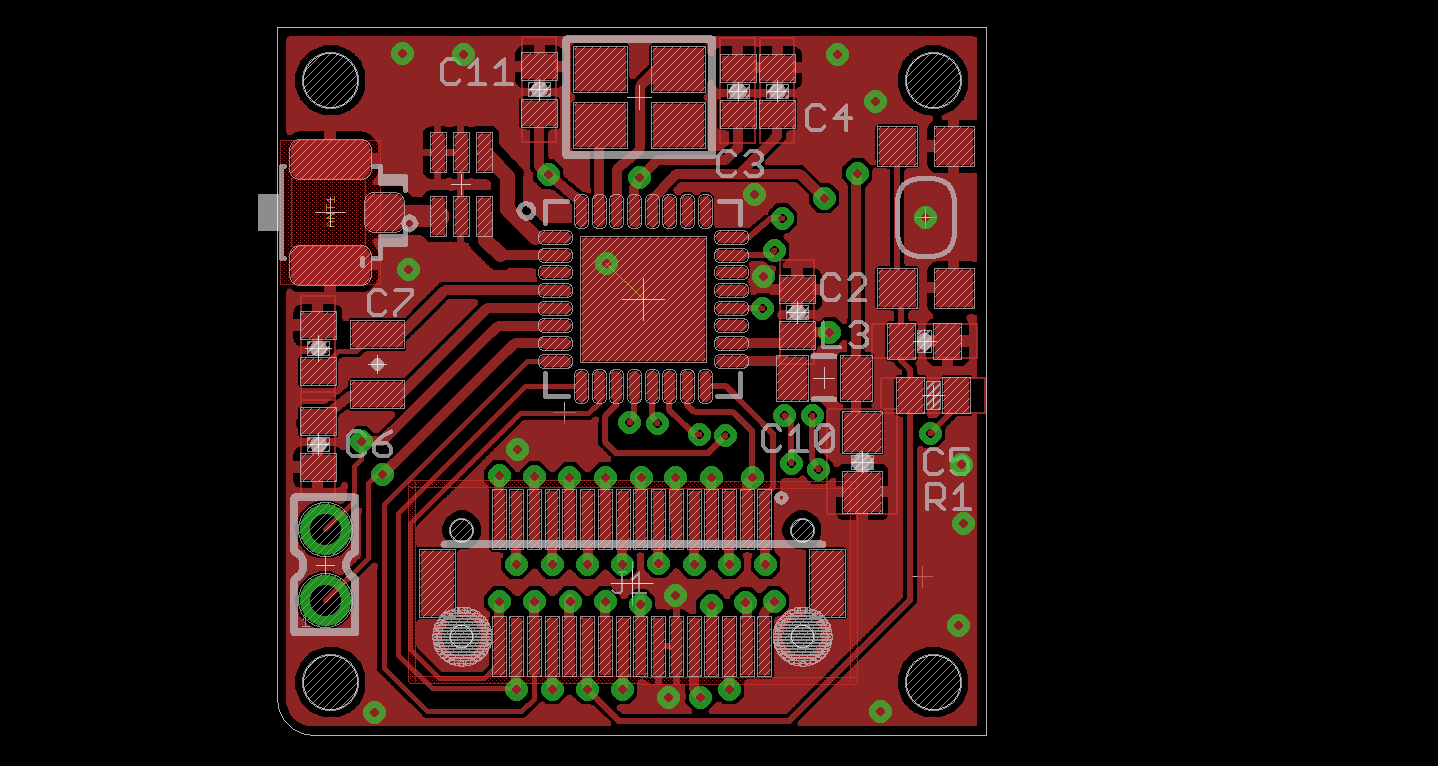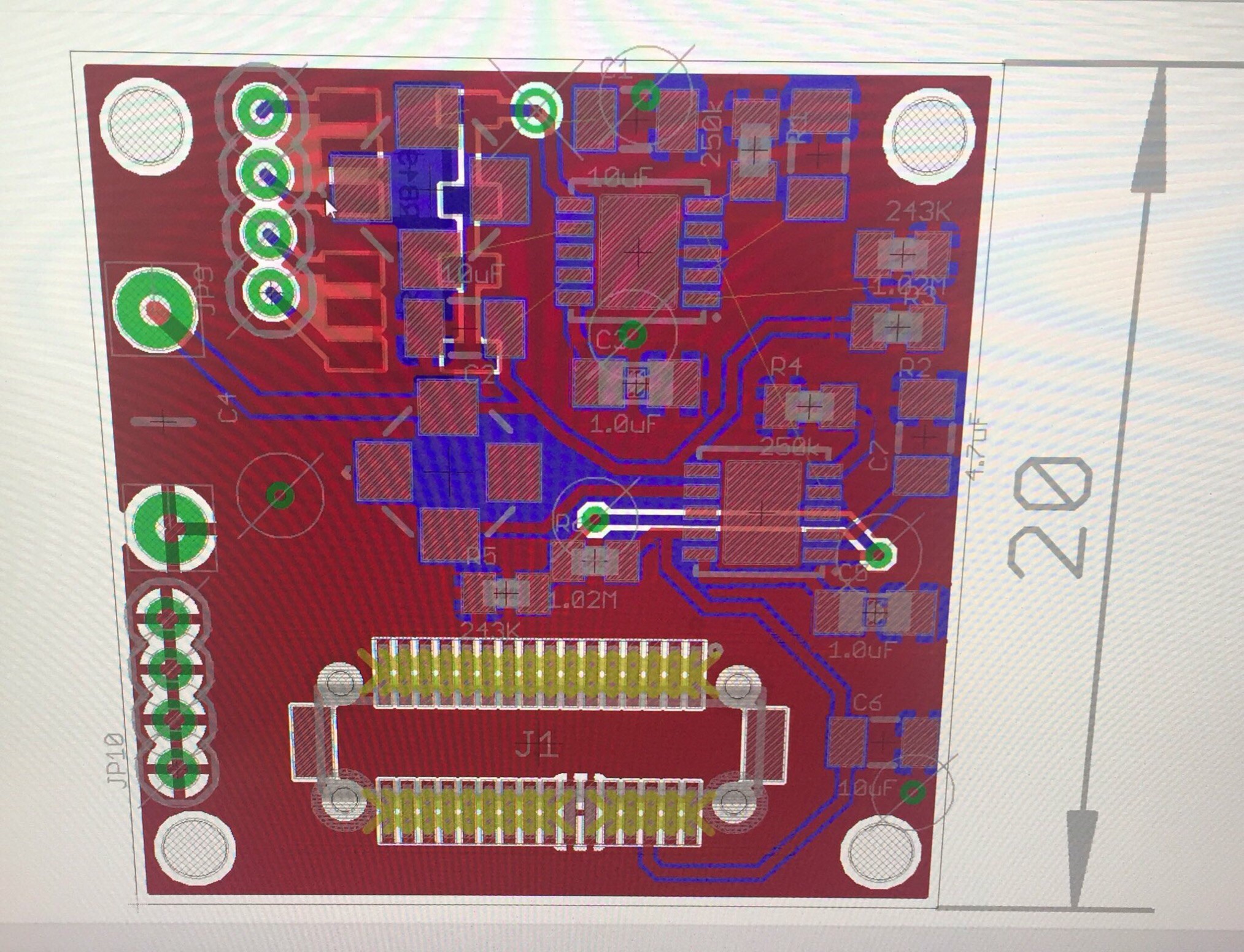-
Thinking about firmware
05/25/2016 at 14:20 • 0 commentsBuilding the hardware for the Flea is only half the challenge. It will also need to have some appropriate software written for it once I have decided on a payload.
To make my job easier, TI have released an updated Reference Design - http://www.ti.com/tool/tida-00488 - Energy Harvesting Ambient Light and Environment Sensor Node for Sub-1GHz Networks Reference Design.
This design uses a CC1310 MCU/Radio, in conjunction with a couple of I2C sensors. On the power side, it uses a TI BQ25505 energy harvesting IC to convert the power from 2 small solar cells (coincidentally, the same type as I have used for the Flea!!) It uses capacitors for storage, and a CR2032 coin cell for when there is not enough solar power.
Thinking about it, the BQ25505 is probably a better choice for the EPS, rather than the LTC3105. But as my design was based on a previous project, I just used that.
-
Boards Away!!
05/02/2016 at 14:44 • 0 commentsThe boards are off to the fab! I had a go at panellising the 20x20mm boards, so that there was 4 boards inside the 50x50mm size limit for DirtyPCB. This way I can get about 40 boards for $14!! Unfortunately, the solar panels are 30mm tall, so they won't panelize in the 5x5 protopack. But because each Flea needs 4 panels, I'll need a bunch to match the other boards. So I went for the 10x10 protopack, and panelized 6 of the solar boards into a 3x2 arrangement. So 60 in total! enough for 15 Fleas! And in case you're wondering why I didn't just use Oshpark and get 3 copies? I needed the 5/5 spacing that DirtyPCBs offers as standard, instead of the 6/6 that most other places use. And why just get 10 boards when I can get 4 times that for the same money! Now what to do for the payload.......???? ( I still haven't decided...) -
Mini Panels!!
04/24/2016 at 13:34 • 0 commentsAfter getting the main board to some kind of completeness, I thought I'd panellise the board to fit in the 5x5cm limit from DirtyPCBs! The image shown is 4 of the 2x2cm boards. So for $14USD, I can get 40 boards!!!
Pity the BOM costs are more like $30....
![]()
-
Low part count!!!!
04/23/2016 at 07:00 • 0 commentsAfter attempting to create a radio PCB for the Flea, I ran into an issue that I'm sure most RF EE's run into.....not enough board area!
Yes, there's many small radio modules out there, like the HopeRF varieties with are 16x16mm. My problem is that in order to fit it into the Tinyduino form factor, I need to account for mounting holes and associated standoffs, the stacking connector AND incorporate some kind of antenna connector.
So even though the SX1276/SX1278 would be ideal for a small satellite, the passives required for the filter etc on the RF front end take up too much space.
So what options do I have?
You may have heard of KickSat? It was a Kickstarter project to send a cubesat into space, and onboard the mothership was almost a hundred "Sprites". These "Sprites" are 35x35mm satellites! Each one had a Texas Instruments CC430F5137 Microntroller on it. This is a low power 16 bit microcontroller with a 433Mhz radio built-in. Due to their configuration, they don't require a huge number of additional components.
I did consider creating a PCB with this micro in it, but TI have now made available their CC1310 . Like the CC430, it is a microcontroller with a radio in the same chip. In this case, it's actually an ARM Cortex M3, with a radio module, and the radio itself has a Cortex M0 in it!!!!
And best of all, its available in a 5x5mm package. (Its actually available in a 4x4mm package, but with reduced GPIOs)
The other good thing about TI radio modules is that you can get a single component front end filter / balun, that allows a single ended 50ohm impedance antenna to be used with it. (Thanks Michael Ossmann!!) The part for 433Mhz is the Johansen Technology 0433BM15A0001 . TI even have a Design Note about it!
So in case that's too much reading - I basically just connect the 1 component to the RF outputs on the chip, and then connect it to the antenna connector!!!!!
AND because it's a microcontroller as well, I can connect the GPIO's up to the backplane connector, allowing me to connect additional sensors or modules.
Here's the almost complete board!!!
![]()
-
Comms for Tiny Satellites
04/18/2016 at 15:55 • 0 commentsin order for the satellite to be useful, it will need to be able to transmit and receive data. Other small sats have shown that a 100mw low cost radio module is all that is needed to communicate from space. As my power budget is extremely limited, I need not only a radio that will fit in the 20x20mm PCBs, but be power efficient.
The smallest 433mhz module is about 16x16mm. But even though this is tiny, the tinyduino sized boards don't leave enough room to solder one of these. This means that a custom radio board is required.
I'm going to use a Semtech SX1278 transceiver IC, in order to use the LORA modulation method. The receive sensitivity of this module is way better the the other small modules on the market. Plus, I need to make up for the losses I'll incur by using a tiny PCB mounted antenna.
Here's the almost complete power supply board:
![]()
-
The Flea is born
04/14/2016 at 15:26 • 0 commentsDay 1 of the project and a project log already???? I thought I'd describe why I'm doing the project.
Well, Hackaday did post an article about the SunCube recently, and it got me thinking. Is a 3x3x3cm spacecraft feasible?
I looked into the ASU press release, and the specification they published. I have to admit that most of my reactions were initially negative. This is coming from someone who is already well into the build of a slightly larger satellite - OzQube-1. OzQube-1 is a single unit PocketQube satellite, measuring 5x5x5cm - which is still tiny! Throughout the build I've managed to squeeze in a heap of capability into a small space. The satellite is going to take photos from space and transmit them down to receivers on the ground.
"But a SunCube measures only 2cm less" I hear you say. Think about this. Each face of a PocketQube is 25cm sq. vs 9 for a SunCube. So straight off the bat, a SunCube has 1/3 of the potential solar power collecting area. By the time you take into account fasteners etc, you'll run into some serious power constraints.
On my satellite, the smallest solar panel measures 45x50mm. It has 6 solar cells, producing a total of 265mW in space. During my satellites development, I found some tiny solar cells, each measuring 22x7mm. The are the ones I used in my 1 Square Inch of Power project here on Hackaday.io. I have made a panel to fit on the SunCube using 3 of these cells. This should output around 85mW in space. So that's definitely around 1/3 of the power generation capability. ( And to use Ohms Law - at 3.3v, that's about 26mA )
Now 3.3V @ 26mA is actually enough to run an Arduino, which needs 12mA (See here) with a few mA to spare to power sensors or charge batteries.
Then there's the issue of communications. Thanks to $50Sat, we know that people on the ground can receive transmissions from a satellite using a 100mW transmitter (the RFM22B). The problem here is that it draws 85mA when transmitting at full power. Even receiving requires 18mA. So we're going to need some kind of supplemental power to be able to run this radio. We won't be able to run the main processor and the radio at the same time if we were just relying on the solar panels.
Supplemental power can come from a battery or supercap. The cold vacuum of space isn't very nice to LiPo batteries in a number of ways. You can't charge below 0 degrees. The pouches expand and can cause damage to themselves and surrounding hardware. So even though a tiny LiPo will fit in the SunCube, it might not be the best choice. A supercap on the other hand can be charged in freezing temperatures. But it still may suffer when put in a vacuum. ( so testing will be needed)
But with a fully charged supercap, a burst transmission of the radio is possible.
Furthermore, looking at some of the new LoRa radio modules, like the RFM98W, you'll find they have a receive current of only 10.3mA. Combine that with processor sleep modes, it looks like the SunCube may actually be in the black as far as power goes.
The Space Flea
A Proof-of-Concept design for a tiny Femtosatellite, based on the SunCube concept
 OzQube
OzQube

